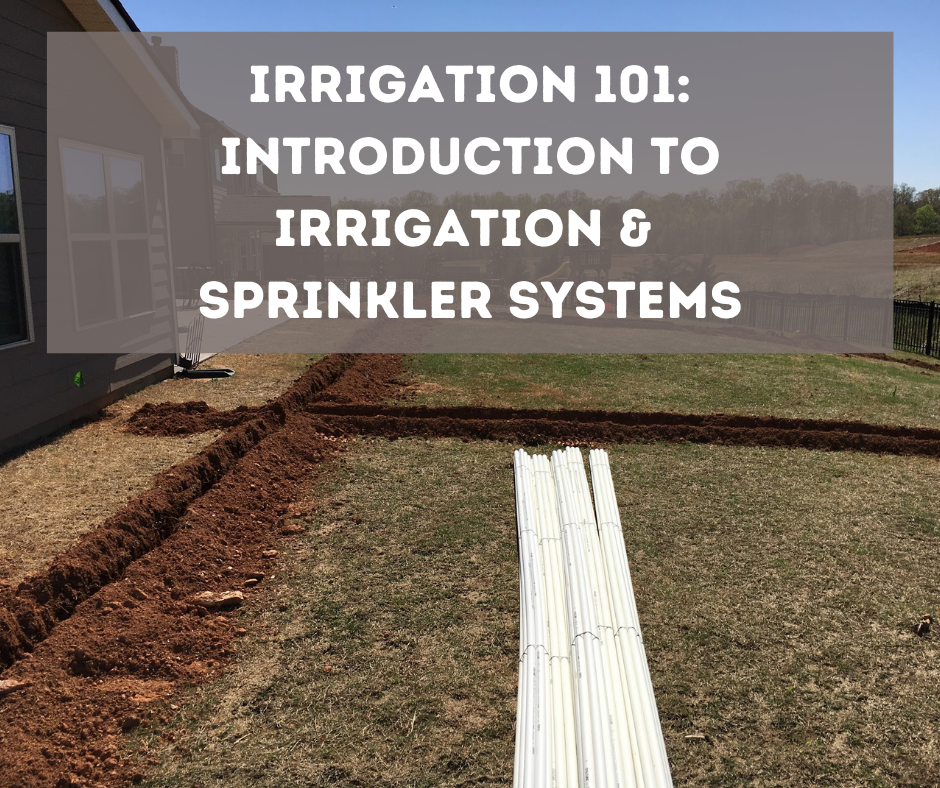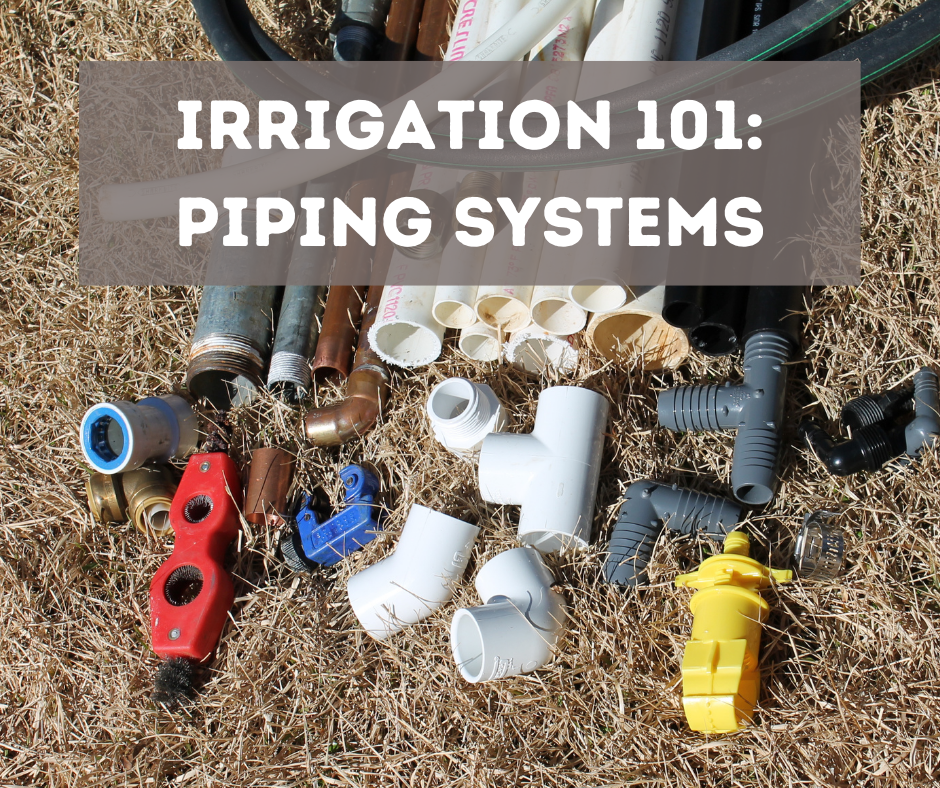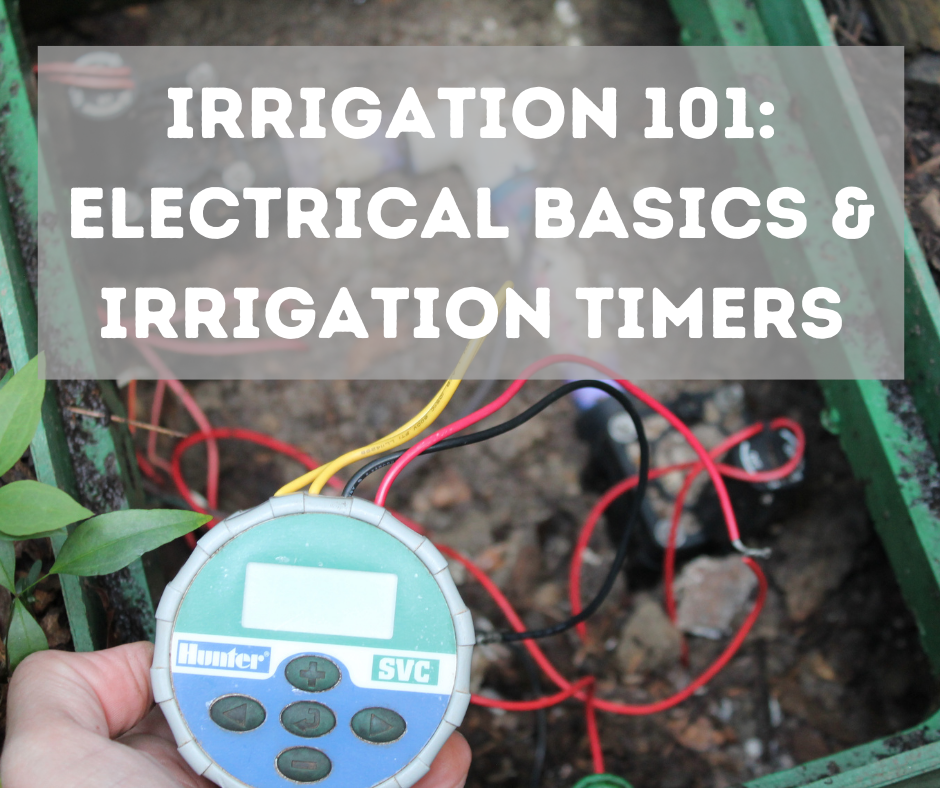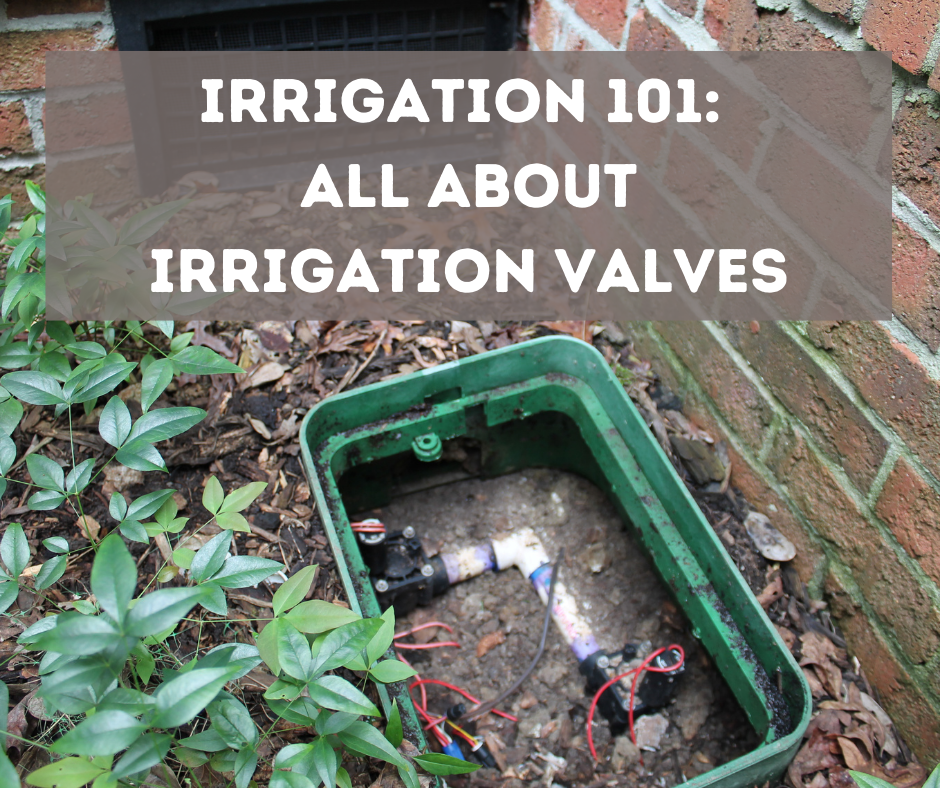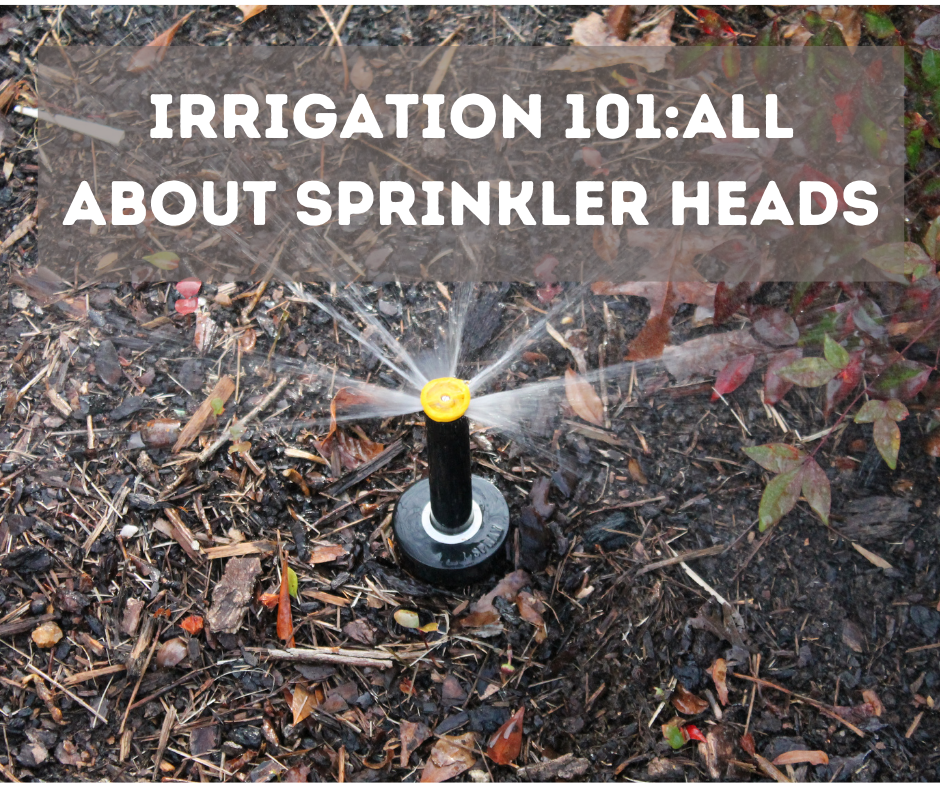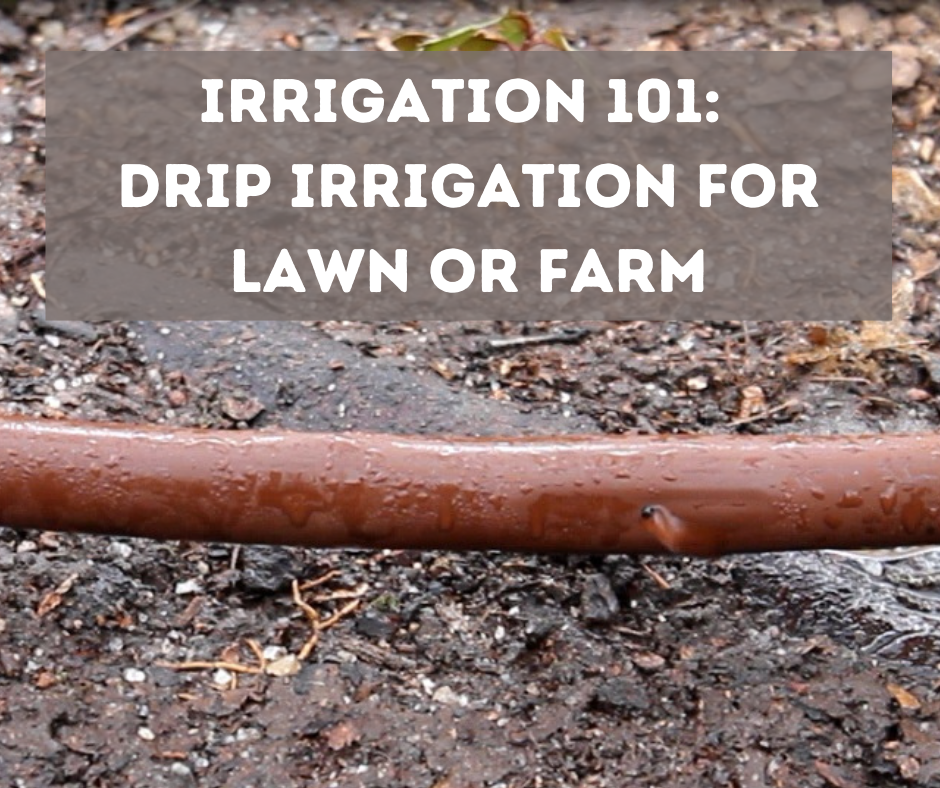Our irrigation training consists of online video courses that one can work through at their own pace. The IRRIGATION 101 series is designed to lay all the foundations of knowledge that one needs to be an irrigation technician. The concepts of Water Hydraulics and Electricity are explored in the first few courses. This information is absolutely critical. If you don't understand the difference and interaction of pressure, flow, velocity, and friction loss, you will always come up short. I personally came up through the business with no system for training a new recruit. As a result, I drew some of my own conclusions about how water behaved. I had it all wrong, lol. 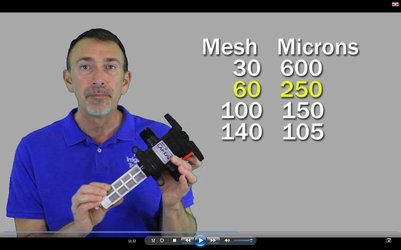 There are other forms of training available, but it's all rather piecemeal. The manufacturers like Hunter, Rain Bird, Toro, etc. will have live, local seminars at the supply houses. I've been to many of these, and I've learned some good info there. They're generally one-topic events that may occur 3 or 4 times a year at best. Please, take part in all of those classes that you can get to. You'll learn some stuff, and it helps you to build relationships with your suppliers and reps. Some of these manufacturers also have some video training available on their website, which is great for some specific issues. These can play a part in your education, as the random YouTube video can, but they're still not an educational system for starting a new person out and building layer upon layer of real world information. Once a year, there are also week long training events usually hosted by large supply chains. I've gone to those as well. In my part of the country, they're usually held at Myrtle Beach, so it's a beach trip which is nice! Cost-wise, admission to the event plus a week's worth of hotels and dining can get a little pricey for those just getting started in business. My only real comment on these type of classes are that they are usually taught by manufacturer's reps. Don't get me wrong, those guys are great and super knowledgeable on their particular products. However, I was left wanting classes taught by actual contractors that were using these products and techniques in the field. I would still take part in these industry events, if I were you. You will definitely learn some things and possibly get some good networking in! With all that being said, why should someone purchase our video training courses? For starters, the price is amazing, if I do say so myself. The everyday price of our paid courses are $35 USD each. When we get done producing all of the courses we have planned for the 101 and 201 series, there will be 11 courses, 9 paid and 2 free. The total cost for all those are going to be around $380. I consider $350-400 to be the absolute minimum that a technician should put in their pocket for a day of service work. In my area, it's usually more like $500 - 600 per day, but 300 to 350 minimum if you're doing any work at all in the worst of markets. There are markets in FL, TX, CA, MI, & NY that get 2-3 times that price. Consider our new course, Drip Irrigation For Lawn And Farm. You will learn everything you could possibly need to know to plan, install, or repair drip irrigation systems. Yesterday, I completed a drip repair job for a commercial client that put $1,600 in my pocket after expenses. I have another job waiting on me to install some drippers in potted plants. It will probably take an hour and a half and net me around $200. Neither of these jobs are anything special, it's what I do all day, every day. So, I would obviously tell you that a $35 course is an outrageous deal. It's an investment in yourself. Could you take the education from our irrigation training courses and make a living with it? ABSOLUTELY, YES!! My goodness, we service company owners are begging for good technicians! When I've talked to small business owners as well as owners of large franchise chains, almost every one of them have said to me, " We love your training, we need that for sure, but first can you find us someone to hire?" So, there is a demand for technicians that can install (correctly) and repair irrigation systems. I have tried to transition away from personally working in the field and become an educator, but the demand is so great, I can't leave my customers until I can start to replicate myself in the field with expert level technicians. That's where you come in! AuthorHi, my name is Michael Haynes, and I'll be your instructor. I've been a successful business owner and technician in the irrigation and lawn sprinkler industry for almost 20 years. I've worked every job at every level in the residential and lite commerciaI side of the biz, and I've started 3 service companies across SC. 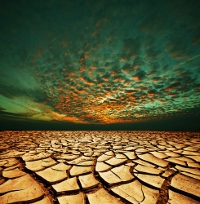 Extreme drought! Extreme drought! Your irrigation system can be your best way of combating drought without overusing water. Droughts have become a major issue to the green & water industries. With inconsistent or reduced rainfall, some water systems have resorted to placing watering restrictions on their customers. How will you cope with the situation, continue to irrigate your landscape adequately, and protect your investment? How can we irrigate in a sensible manner without being damaging to the environment? Fluctuations in regional weather patterns have played a part in the overall disruption, but the rising water demands of urban populations have played an even larger part. Mismanagement of irrigation systems has had a detrimental effect on reservoir levels in some parts of the country. While proper irrigation can be a massive benefit to the environment, the proliferation of residential lawn sprinkler systems has led to much waste. This provides an opportunity for us to educate contractors and homeowners how to responsibly use their systems. Sometimes a drought can be a good thing, in that many people are forced into a realization that less water can adequately maintain their landscape. Most contractors are sure to have seen it, sprinkler systems set to run heavily every day, with rivers of wasted water running down the street. In fact, watering too frequently can be the root of an unhealthy landscape. Whereas some ornamentals or crop species prefer "wet feet" or a root system that's kept closer to saturation, most species including turfgrass prefer a regular wet/dry cycle. Soil that's kept saturated can prevent adequate oxygen from making it to the roots. Constantly providing water to a shallow root system doesn't provide motivation for the plants to develop more extensive roots. There are always some clients that we know we'll get mid-season callbacks from. We perform a Spring Start Up in March or April, reset the timer and advise the homeowner against watering every day. We leave, they reset the timer for every day, and then around the middle of July I'll get the call, "Mike, I thought you adjusted my system? I've got all these brown patches developing around my yard, I don't think I'm getting good coverage." If you would dig up a shovel depth of dirt, you would see that their root depth would be around 1" - 1.5." You should see root depth on healthy turf grasses around 5" - 6." Their system is adjusted fine, but the plants don't have enough roots to draw water from when the temps hit the 90's and above. We can prepare our landscapes for droughts by training our plants to grow deeper root systems. The goal of our sprinkler system should be to soak the ground to a depth just below the existing root depth. Roots will not grow into dry soil searching for water, but they will grow into wet soil providing all their other needs are being met, oxygen, light, nutrients, etc. A grass or plant that has a deeper, more extensive root system will have a larger well to draw from, so to speak, as water becomes scarcer in the soil. Here are some things that you can do to prepare for a drought. * Spring Start Up. A yearly tune up and re-evaluation of your irrigation system is a great start. A competent adjustment will keep the water where it needs to be and not on the driveway or street. Performing this check early in the season will give you advance warning of any problems that may need to be resolved while it's not an emergency issue. * Switch to a warm season grass if possible. Turf grasses that go dormant during the winter require less water overall, and are much more drought and heat tolerant. In my experience, Bermuda, Zoysia, Centipede, and the other varieties are just tougher than Fescue. Some varieties also require much less nitrogen and pre-emergents, which is a bonus to the environment. Of course, your turfgrass selection can be largely dependent on your location or agricultural zone. * Practice Xeriscaping. This is a new landscaping method that carefully selects shrubs and ornamentals native to the area being used, and also have a low water requirement. Some xeriscapes require very little additional watering, and lend themselves well to low volume drip irrigation. Drip and microspray systems can be easily configured to irrigate precisely where it's needed at slow application rates, preventing evaporation and runoff. What can we do to minimize the damage once the drought has started? Here are a few strategies to cope with elevated temperatures, reduced rainfall, and watering restrictions that may only allow watering twice a week. * Mulch them if you love them! A proper 2 - 3" layer of mulch will hold down the evaporation from the soil. Don't overdo it, though, too much mulch can strangle and suffocate a plant. We routinely see mulch depths of 10 - 12"! * Breaking wind? No, we're not about to descend into middle school humor! I'm talking about actually protecting your landscape from excessive wind. Air blowing constantly across turf or other plants can greatly increase the amount of water transpired. Use hedges or rows of trees strategically to break the flow of wind. On some properties, this could improve net efficiency by 20 - 40 %. * Hold back on the fertilizer. (If you can't continue to water, that is.) We wouldn't recommend abstaining from all fertilization, but a reduction is definitely wise. Nutrients will promote new growth, which requires more water. * Mow taller and less frequently. This follows our logic in the fertilizer area, more cutting promotes more new growth., which again requires more water. * Stay after the weeds. Uninvited species will compete with your turf and ornamentals for the available resources in the soil. Many turf species, when kept healthy, can naturally keep weed growth to a minimum. Once that grass becomes weak and unhealthy, it's a different game. Weeds will take over and require more chemicals or effort to eradicate later. *Observe run-off or other inefficiency. There is a problem with clay dominant soils. As these soil types lose available water and move closer to the permanent wilting point, the particles become denser and develop an even slower infiltration rate. A hard crust may even form on top of the ground. When one observes excess water puddling up or running off of irrigated areas, it's time to consider a different strategy, the cycle and soak method. * Cycle and soak. Multiple cycles executed with an hour or so between is a great strategy if you've been confined to only two days of watering. This method is also excellent for dealing with soils of a heavy clay content or radical slopes. Consider this example: We have a property that has a top layer of 1" of silty loam topsoil that probably came with the sod. Underneath is primarily hard pan clay, compacted from the home building process. There are 3 zones of rotors that water the turf for 40 minutes per zone, with one start time of 5am. We've calculated the watering requirements and really need 40 minutes of watering, but after each zone runs, we see large amounts of water cascading down the driveway and forming a small stream down the street to the drain. What we should do is reduce each zone's run time to 20 minutes, and switch to two start times. We'll keep the original start time of 5am and add another for 3am. This gives us the 40 minutes of run time that we need, in two 20 minute sessions. The hour and 40 minutes between each zone's cycles provides plenty of time for the first application of water to soak in and be ready to accept the later application without runoff. So, after reading our advice, are you still dreading a drought? Proper preparation can ease our anxieties and help our landscapes survive! Take the time today to evaluate your property and irrigation strategy, it may be time for a change! If you have other strategies, let us know in the comments. AuthorHi, my name is Michael Haynes, and I'll be your instructor. I've been a successful business owner and technician in the irrigation and lawn sprinkler industry for almost 20 years. I've worked every job at every level in the residential and lite commerciaI side of the biz, and I've started 3 service companies across SC.  Let's examine using your irrigation or lawn sprinkler system to establish new plantings. We'll discuss drip irrigation, tree bags, scheduling strategies, and other techniques for ensuring that your new plantings survive! Have you ever lost a newly planted tree or shrub? It gets expensive! One of the most common irrigation mistakes that we encounter in the field is providing water for new plants. We often see new plantings severely stressed, and usually the blame is placed on the irrigation system. Of course, planting anything during the months of peak temperature will be challenging, but a proper understanding of a plants water needs and your system's ability to provide those needs can translate into real money in your pocket! I can't count the number of situations that I've seen where someone plants a row of 2" -3" (trunk diameter) trees, and expect their irrigation program of every other day or every third day to suffice. A new plant from the nursery will normally have instructions on how much to water. Sometimes that amount is given in a weekly number, but more often it's given in a daily amount. That daily amount is what's important to remember. In the winter or cooler months, when the ET or Evapotranspiration rate is 10 or 20% of it's summer peak, it may be possible to water every other day. Evapotranspiration is the amount of water lost from evaporation from the ground, combined with the amount of water that the plants transpire into the atmosphere. To give you some reference, I live in the Upstate of South Carolina. In January, our ET rate is .02 inches per day, but in July it's .2 inches per day. During the summer, a single mature tree can transpire 2-3 gallons of water a day. A good, general estimate in the absence of a specific recommendation, is 10 gallons per week per inch of trunk diameter. Using this estimate a 2” trunk diameter tree would require 2.85 gallons a day. I performed a real world test on my own system to see how much water would be applied to an area equal to the rootball of a 2” tree, just like the Hollies pictured above. An average rotor run time for our area is about 30 – 40 minutes. So I ran the zone for 40 minutes and collected 2 Quarts or 1/2 of a Gallon. This zone has head to head coverage in a triangular pattern, with 3 heads covering this area. I generally run my system 3 days a week during the hot season. As we can see, this is completely inadequate. Our primary concern is how much water that we can get to the rootball. A transplanted or container grown plant will have maybe 10 - 20% of the root area that it needs initially. Rootballs, especially those that have been burlapped can take up to two growing seasons to become completely established. The true challenge is keeping that plant alive during not only the first couple of months after the transplant, but also the crucial first summer in the ground. I've been told that a newly transplanted plant should be treated for the first year as if were still in a container. It should also be mentioned that we're talking about watering the rootball, not the hole prepared for the rootball. One should be preparing a hole twice as large as the rootball, but we must remember our focus. 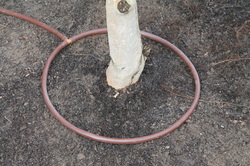 A condition that we can see bearing upon transplanted plants is the compaction of the rootball and included soil. There is very little "pore space" in the average rootball due to the dense structure; many times plants are "rootbound" and need time to start spreading out the root network. To compound the problem, water typically won't flow from a saturated soil into the rootball. There are only minimal amounts of lateral water migration in most soils, so the primary concern is applying water directly to the rootball, and to further compound the problem, we can't apply too much water! Overly saturated roots during periods of elevated air temperatures can cause a plant much stress. The proper solution to irrigating newly planted trees and shrubs must involve precise placement of water at very slow application rates to deeply penetrating depths. The best case solution is drip irrigation. Dripline can apply the needed amount of water at a very slow rate to allow proper infiltration into the rootball. Be careful, though, it's easy to overwater with drip if you don't understand the flow/application rate of the product that you're using. The supply house, contractor, or manufacturer can supply this info. Most of the manufacturers have friendly customer service lines.  The next best solution is a tree bag. Treegator (unsolicited mention) is the brand that we're familiar with, they definitely perform as advertised. There are a couple different brands out there, but like anything else, find the product that you can rely on. These bags wrap around the base of a newly planted tree and soak water directly over the rootball at a slow application rate. One has to attach a garden hose about once a week or so to keep it filled. It's a little more visible, and requires a little bit of effort, but tree bags are a fine solution in the absence of an automated system. So, what's the plan? Hopefully I've convinced you to take a more proactive role in caring for newly planted trees and shrubs. Consult with your landscaper or nursery to get localized suggestions for how much to water. Find a solution that allows you to water slowly every day, and pay attention to your plants! AuthorHi, my name is Michael Haynes, and I'll be your instructor. I've been a successful business owner and technician in the irrigation and lawn sprinkler industry for almost 20 years. I've worked every job at every level in the residential and lite commerciaI side of the biz, and I've started 3 service companies across SC. |
AuthorHi, my name is Michael Haynes, and I'll be your instructor. I've been a successful business owner and technician in the irrigation and lawn sprinkler industry for almost 20 years. I've worked every job at every level in the residential and lite commerciaI side of the biz, and I've started 3 service companies across SC. ArchivesCategories
All
|


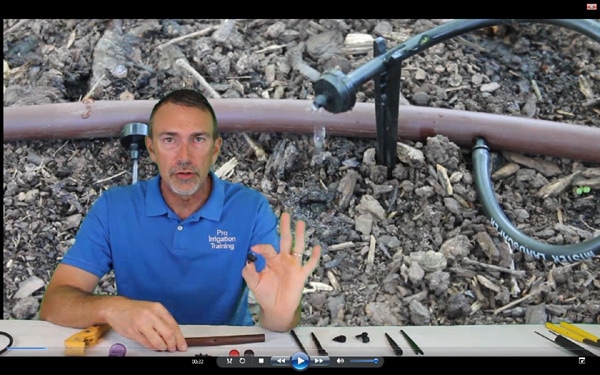
 RSS Feed
RSS Feed
